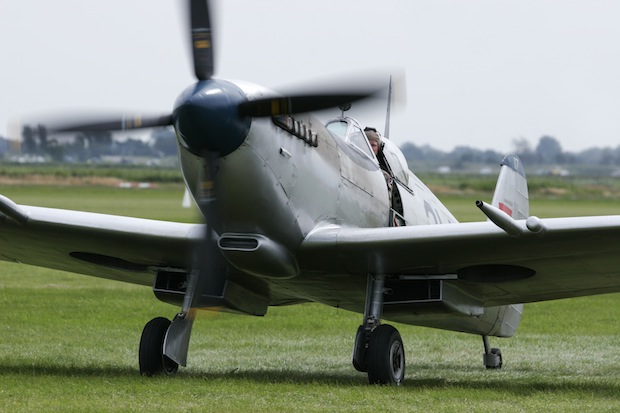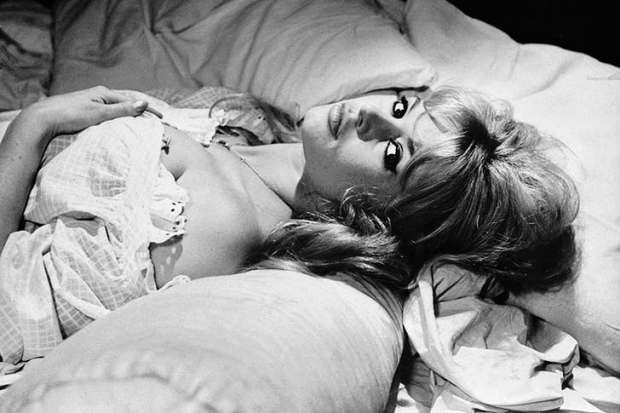My village, Stoke Bruerne in south Northamptonshire, is just getting back to normal after a great influx of visitors for its annual weekend festival called ‘Village at War’. Stoke Bruerne is a small place that sits astride the Grand Union Canal about halfway along its route from London to Birmingham. Its fame, such as it is, rests on its seven locks and the fact that it houses a Canal Museum; and the ‘Village at War’ event was started six years ago by the Friends of the Canal Museum to raise money for that excellent institution. I don’t yet know how well it has done this year, but last year it was attended by more than 12,000 people and raised £20,000.
According to the Village at War’s website, this is Britain’s ‘only wartime vintage themed canal festival’, which is about as rarefied a category as one could imagine. And Stoke Bruerne also seems a strange place in which to hold such an event because its role in the second world war was, to say the least, insignificant. The canal, it is true, was unusually busy during the war years, carrying coal and other freight between the Midlands and London to relieve the burden on the railways. But the village itself suffered no damage and no war deaths.
The war memorial beside the church, which serves both Stoke Bruerne and its neighbouring village, Shutlanger, lists 18 servicemen from both villages who lost their lives in the first world war, but only two from Shutlanger (and none from Stoke Bruerne) who died in the second world war. Between them these villages raised a platoon for the Northamptonshire Home Guard, and Stoke Bruerne alone mustered two motor cars, one motorbike, 12 bicycles and 13 wheelbarrows for use against the enemy in the event of a German invasion. But the invasion never came, the platoon wasn’t needed and the wheelbarrows stayed in their sheds. There were units of the Canadian army stationed about a mile away at Stoke Park, where I now live, but Stoke Bruerne’s experience of the war might just as well be commemorated by a festival called ‘Village at Peace’.
The Friends of the Canal Museum were, however, shrewd to choose the theme of the second world war for fundraising purposes; for they tapped into a nationwide passion for historical re-enactment. Stoke Bruerne may have suffered nothing worse during the war than the faint sound of two landmines being dropped from a stray German aircraft on a village a few miles away, and the dim glow in the sky from the fires in faraway London and Coventry after German air raids, but that is of no importance to the many thousands of people throughout Britain who seize any opportunity to put on uniforms or dress up in period costume wherever this is encouraged. There was no ceremony at the war memorial in the churchyard; and the church itself was used not for a religious service but for ‘vintage fashion shows’. So much for remembrance.
There was a Spitfire fly-past and a battle re-enactment; there were tanks and other military vehicles on display; and there was a rather sad-looking Winston Churchill impersonator posing for photographs with cigar and victory sign. There was patriotism, too, with union flags everywhere and strings of little ones festooning many of Stoke Bruerne’s stone cottages. But the event felt less like a commemoration of war than one of the resilience and solidarity of ordinary people in the face of adversity. There were some people dressed in military uniforms, but far more of them in what were assumed to be the normal civilian clothes of the period — dowdy and practical, with a little flamboyance permitted only in women’s headgear. For men, a hat — usually a trilby or a flat cap — was often considered enough in itself to suggest the 1940s. When they weren’t parading up and down beside the canal, they were taking dance lessons in the village hall, buying nylon stockings in a ‘black market’, or listening to open-air concerts by a George Formby impersonator (the spookily convincing Paul Casper) and Lola Lamour, a singer of nostalgic wartime songs, who says on her website that she is ‘well known for my many shows on the 1940s re-enactment scene’.
To me it seemed at first infantile and even a little creepy that thousands of people from all over Britain should be drawn to an event like this. What were they after? I decided that they were perhaps less interested in celebrating Britain’s glorious resistance to the Nazis than in evoking the cosiness, togetherness and simplicity which (they wanted to believe) had characterised British society at that time. I can understand that, even if I find it rather sad.
Got something to add? Join the discussion and comment below.
Get 10 issues for just $10
Subscribe to The Spectator Australia today for the next 10 magazine issues, plus full online access, for just $10.
You might disagree with half of it, but you’ll enjoy reading all of it. Try your first month for free, then just $2 a week for the remainder of your first year.













Comments
Don't miss out
Join the conversation with other Spectator Australia readers. Subscribe to leave a comment.
SUBSCRIBEAlready a subscriber? Log in